
Prepare for our Section 3 Quiz with this Section 3 Review. This video will go back over the key points of this section.
- Subject:
- Allied health personnel
- CTE
- Health and Medical Science
- Medical informatics
- Date Added:
- 01/27/2014

Prepare for our Section 3 Quiz with this Section 3 Review. This video will go back over the key points of this section.
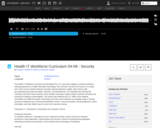
This unit covers common security concerns and safeguards, including firewalls, encryption, virus protection software and patterns, and programming for security. Additional topics include security of wireless networks, and concerns, mitigations, and regulations related to healthcare applications.
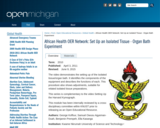
The video demonstrates the setting up of the isolated tissue/organ bath. It identifies the components of the equipment and describes the functions of each. This procedure also shows adjustments, suitable for related isolated tissue preparations.This series is complementary to the video Setting Up the Harvard Kymograph.This module has been internally reviewed by a cross-disciplinary committee within KNUST prior to releasing as an Open Educational Resource.
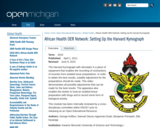
The Harvard Kymograph with stimulator is a piece of equipment that enables the recording of contractions of muscles from isolated issue preparations. In order to obtain the best results, suitable adjustment for the preparations should be made. This video demonstrates all possible adjustments that can be made for the best results. The apparatus also enables the worker to treat an isolated tissue preparation with drugs and to record some form of biological activity.This module has been internally reviewed by a cross-disciplinary committee within KNUST prior to releasing as an Open Educational Resource.
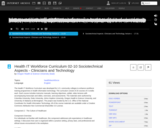
This unit looks at the challenges of adapting work processes to new technology, and the resulting impact on quality, efficiency, and safety. This unit also examines the phenomena of social and technical resistance to change, especially among clinicians.
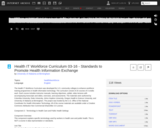
This unit describes definitions and concepts in the electronic health record (EHR).
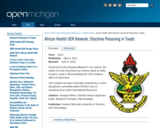
Strychnine is the principal alkaloid in nux vomica, the seeds of a tree strychnos nux vomica native to India. A toad is used in demonstrating the CNS ecitatory effect of strychnine.This module has been internally reviewed by a cross-disciplinary committee within KNUST prior to releasing as an Open Educational Resource.
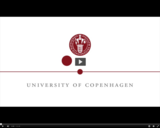
In this presentation, we discuss how tourism in Zanzibar may add to the number of mosquito breeding places and thus increase the use of chemical insecticides, which is a major environmental strain to Zanzibar. Furthermore, we will discuss how mosquitoes become resistance to the insecticides and how tourism affect this resistance development.
You might also listen to this related podcast-series about Zanzibar- Paradise under Pressure, about sustainable tourism: https://paradis-under-pres.simplecast.com/
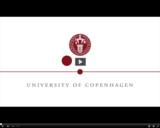
This presentation introduces the Sustainable Development Goals (SDG), and discuss why development of sustainable tourism has become part of the global agenda. In continuation of this, we will discuss the global trends in tourism.
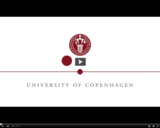
In this presentation, we will discuss the impacts of tourism on marine environment in Zanzibar. In continuation of this, we will discuss sustainable development challenges regarding small island environments. Among challenges are rapid growing populations, a constantly rising number of tourists, limited freshwater resources, and fragile marine ecosystem.
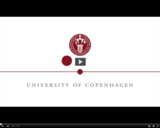
This presentation introduces the term “death by tourism” and discuss’ the impact of uncontrolled tourism on local communities. In continuation of this, we will discuss the importance of Certification of Sustainable Tourism and introduce the three types of Sustainability Certification schemes.
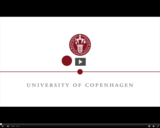
In this presentation, we will discuss how saltwater intrusion affects small islands freshwater supplies, and how tourism is a significant part of this. In Zanzibar fresh water for drinking and other purposes come from rain that replenishes the island’s groundwater reservoir and in many cases freshwater is a scarce resource. On top of this, the excessive pumping in groundwater for the tourist industry increases the risk of salt water seeping into the freshwater magazine from the sea, thereby destroying the freshwater resource.
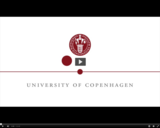
In this presentation, we will discuss how poor waste management affects the tourism negatively in Zanzibar. Unsustainable solid waste management in Zanzibar impacts the local environment, has adverse effect on communities and generate negative reviews from tourist, which is a major threat to tourism in Zanzibar and hence their economic resources.
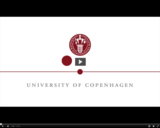
In this presentation, we will discuss how tourism affects different local communities, including Zanzibar. A study from Zanzibar published in 2015 found that only 20 percent of the GDP generated by tourism occurred to local communities, so it seems possible to develop forms of tourism with greater benefits to the population of Zanzibar, including local population.
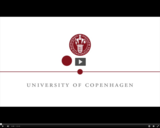
In this presentation, we will introduce the threats of growing tourism and discuss what countries can and should do to prevent these threats. Tourism has become one of the fastest growing economic sectors in the world, offering millions of jobs and lucrative opportunities for investment. However, the environmental and natural resources are under great pressure from tourism, which has consequences for both the health and the well-being of the local population.
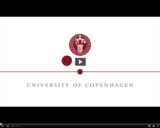
In this presentation we focus’ on how tourism is a major generator of solid waste in Zanzibar. Tourist from OECD countries bring with them the lifestyle that replicate the waste generation from their native country, not only the volume of waste follows the tourist but also the composition. In Zanzibar, the composition is 80 percent organic material, but in OECD countries, the composition is only 25 to 30 percent organic material. This leaves Zanzibar’s traditional organic based waste handling system unable to handle the tourism waste.
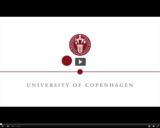
In this presentation we will discuss how tourism affects the daily water use in Zanzibar and how a significant water consumption, has the potential of undermining the sustainability of the tourist sector in Zanzibar. Zanzibar has a great water disparity with 15 times higher daily water use per tourist compared with local residents.
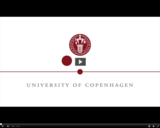
This presentation introduces the International Year for Sustainable Tourism for Development (2017). In continuation of this, we will present and discuss data from the World Tourism Organization.
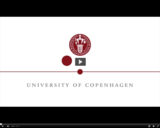
In this presentation, we will discuss how tourism development affects the coral reefs and in continuation of this, we will examine the Crown-of-Thorn Starfish invasion around Zanzibar. Reefs sustain human society, such as fishermen's livelihood and they are also a key asset for the tourist industry. However, the reefs are also under pressure from a range of human induced stresses, including the expanding tourism.
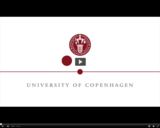
In this presentation, we will discuss what happens to low-income countries like Zanzibar, when tourists arrive and continue their western lifestyle in a tropical setting with scare resources. We will among other focus on the wastewater generated, the consequences of water use and the tons of solid waste generated by the tourists.